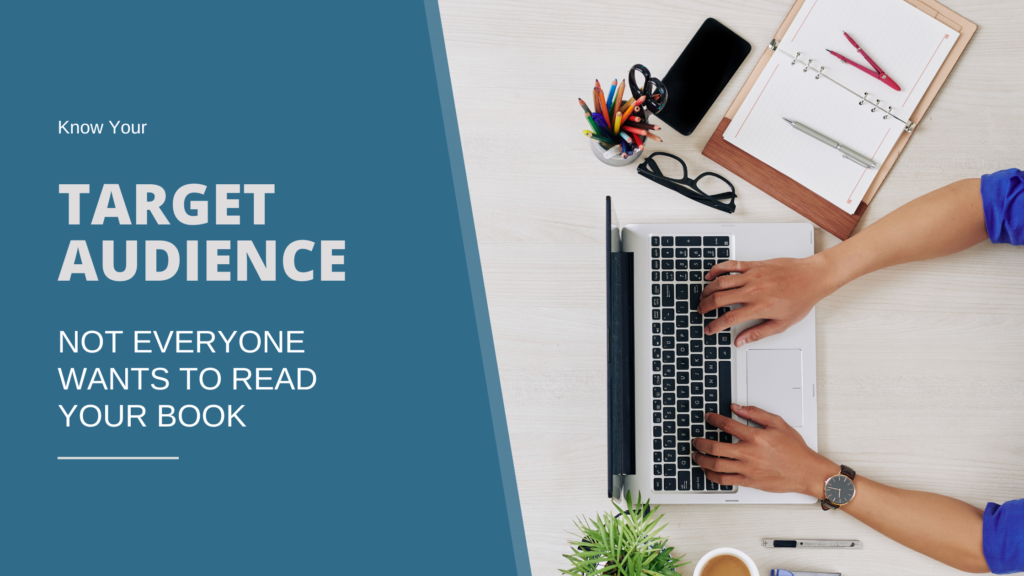

Knowing your target audience is one of the most important things you can do for the success of your book. Ideally, this should happen even before you start writing, or at least in the early drafts. Yet, when I ask authors who their target audience is, 90% of the time they say, “My book is for everyone!”
The problem is, if you try to write a book for everyone, you end up writing a book for no one—or worse, a book only for yourself. The truth is, not everyone will want to read your book, and that’s okay. Even bestsellers don’t appeal to everyone, just look at the one-star reviews!
We all want to write a book that touches hearts, makes a difference, and hopefully gives us a paycheck, right? To achieve that, you need to consider two crucial factors:
Your target audience is the group of readers who will love your book the most and be the most likely to purchase it. Your ideal reader is the person who would most love and benefit from your book.
Sometimes, your target audience and target reader is different. For instance, if you write a children’s picture book, your target audience is the parents or teachers who are most likely to buy your books. However, your ideal reader is the child who would most love and benefit from your book.
You might be thinking, “But I want my book to be read by as many people as possible.” And that’s understandable. But, narrowing your target audience can actually help you reach more readers in the end.
Here’s how: If you know your target audience, then you will not only write a story that will appeal to those readers, you will know how to find them with your marketing efforts! This doesn’t mean that no one else will read your book, but it will help you create a book that readers love—and they’ll spread the word.
Knowing your target audience influences everything from your cover design to what social media platforms you invest in and where you advertise your book.
To discover the target audience for your book, consider the demographics:
and psychographics:
Ask yourself where they shop, what websites they enjoy, what they eat, what hobbies and other interests they have. Look at other book similar to yours (called comp titles). Who is reading them? What need do they fill? What themes are prevalent? And how does your book offer a unique angle?
Avoid being too broad. Saying your book is for “women” is not enough. A better example would be moms of preschoolers who want to teach their children emotional regulation techniques. Or, for a fiction book, young adult girls ages 13-18 who like closed door fantasy romance with assassins and love triangles.
Again, that doesn’t mean that only teenage girls will read your book. In fact, adults might love it too. But those adults will be seeking the same things as your target audience.
Everlasting Spring‘s ideal reader is a woman between 25–34 who casually enjoys poetry and follows modern poets like Rupi Kaur, Brianna Wiest, Whitney Hanson, and R. M. Drake. She often shares resonant quotes on Instagram and gravitates toward books on personal growth, healing, and purpose—think Brené Brown. She’s introspective, emotionally intelligent, and more powerful than she gives herself credit for.
She is in a life season where she is investing in herself and her growth for herself, not necessarily for a family. She’s likely been to therapy, is open to life coaching, and practices self-care through journaling, meditation, exercise, and nesting at home.
She shops on Amazon (Prime member), treats herself to Target, frequents Trader Joe’s and Whole Foods, and views takeout as a form of self-kindness. She wears athleisure for both comfort and style, and her bookshelf proudly displays reads gifted by friends.
Professionally, she’s educated, growth-oriented, and may be involved in women-led initiatives or ERGs if she works in corporate. She values emotional depth, authenticity, and empowerment. Though she doesn’t read The New Yorker, she enjoys content from Goop, mindbodygreen, and SELF. Poetry, song lyrics, and affirmations all help her reconnect with her inner strength.
By writing for and marketing to your target audience, your book will attract readers who love it and who will share it with others.
Defining your target audience can differ between fiction and nonfiction. This article provides more in-depth help in choosing your nonfiction audience. This article focuses on targeting fiction readers.

2488 East 81st St. Suite 2000 Tulsa, OK 74137
Open by appointment only
Hours: Monday – Friday; 9am – 4pm
(918) 394-2665
Info@yorkshirepublishing.com